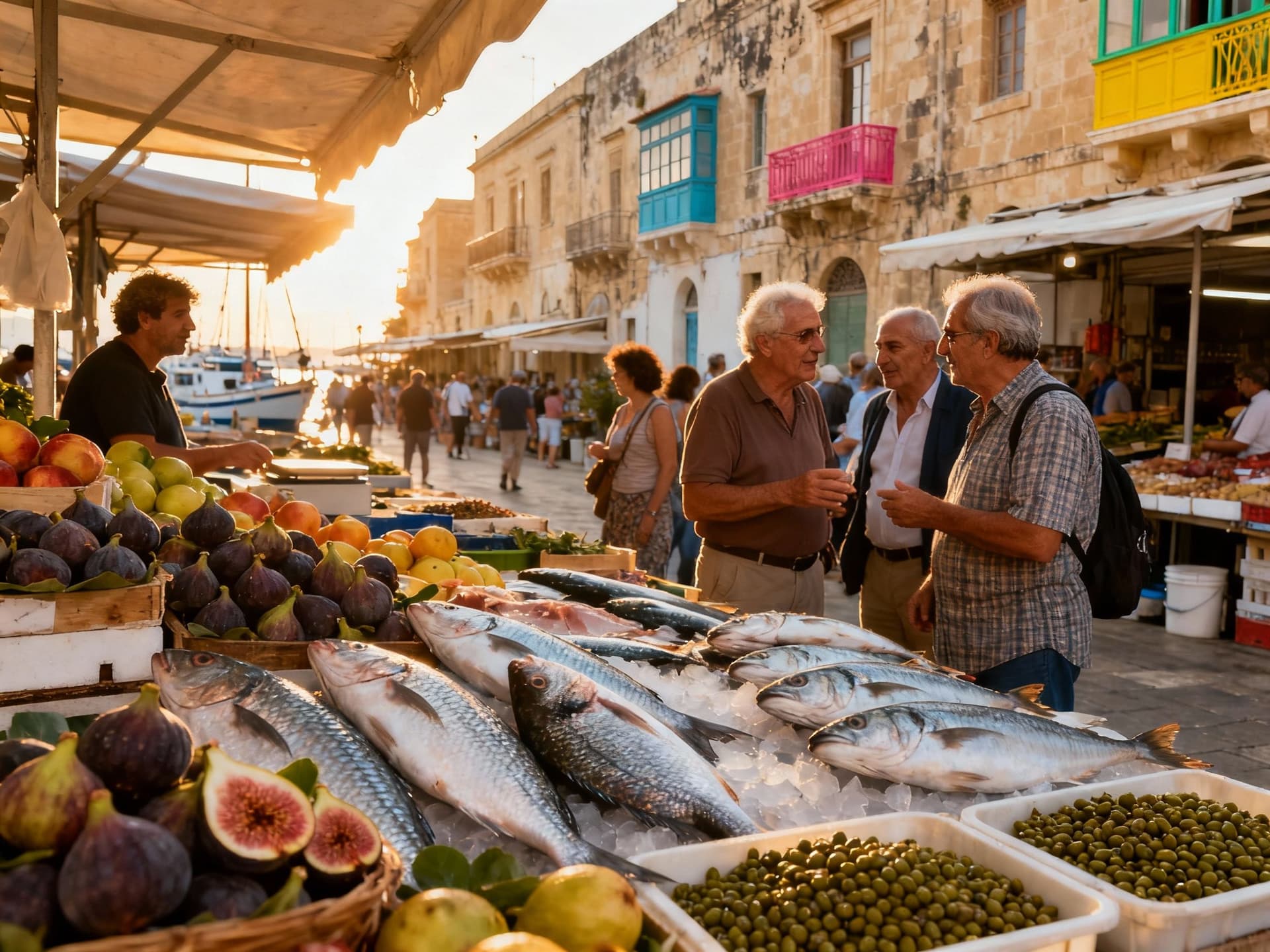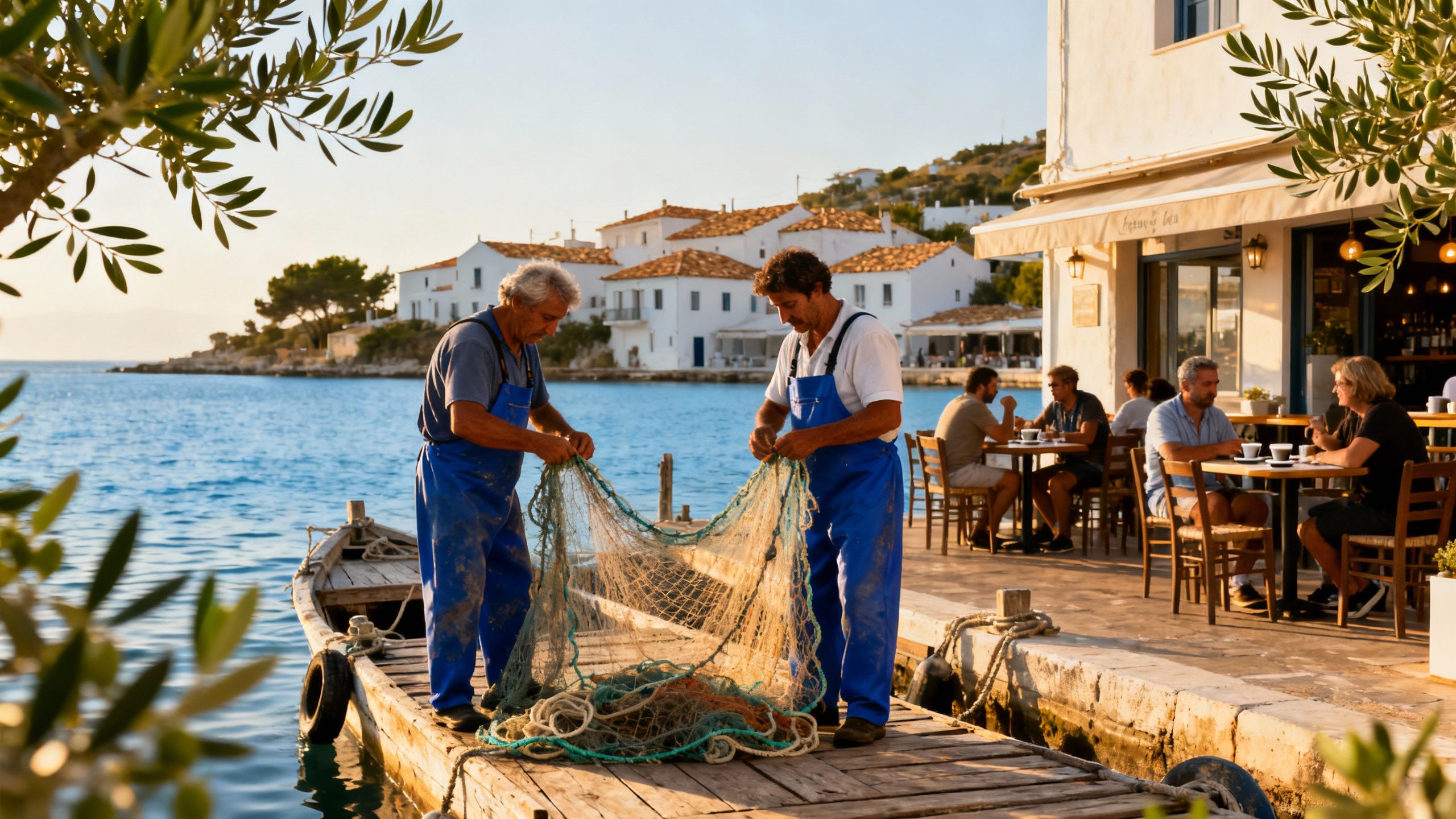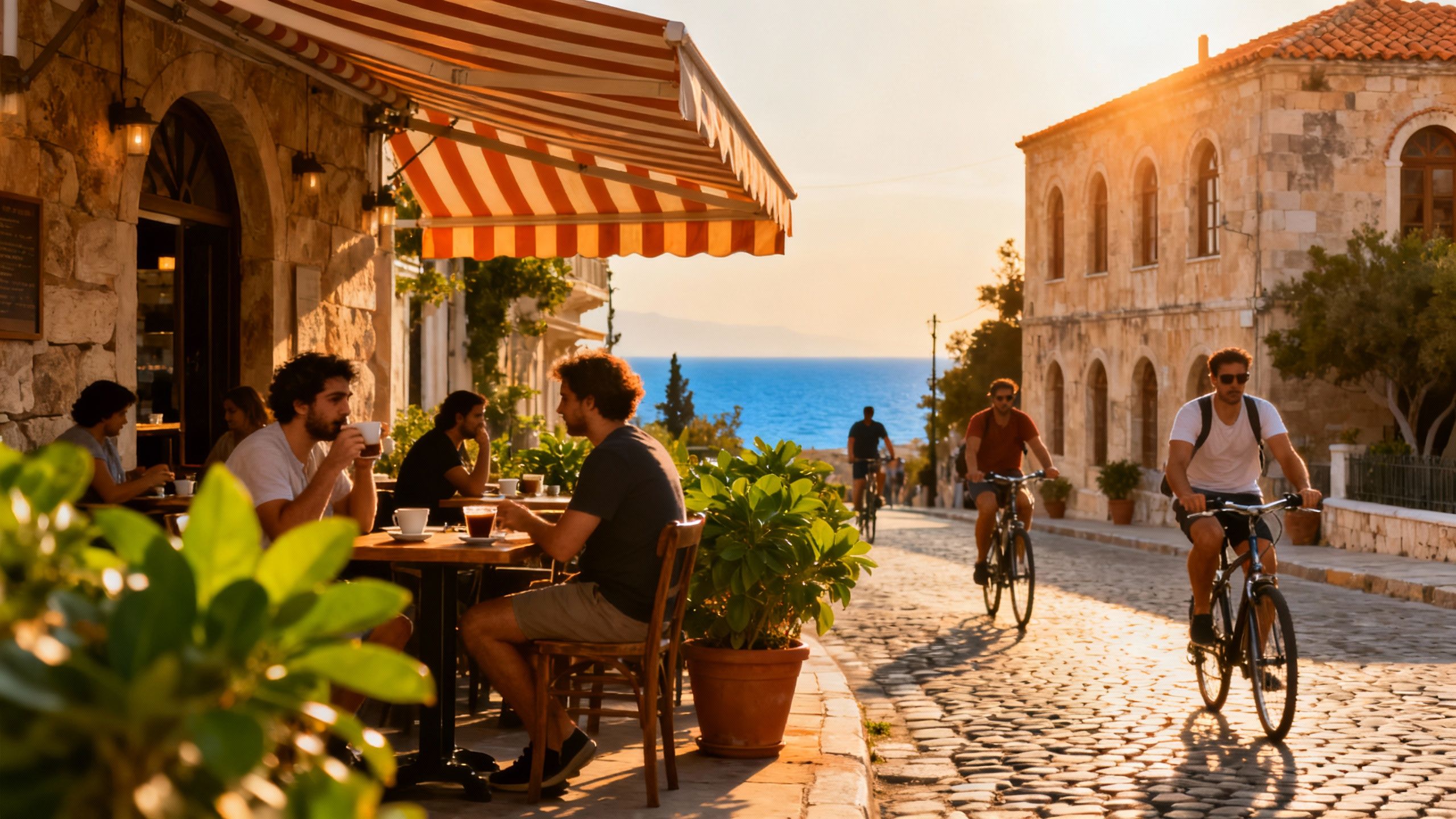Malta: Small Island, Big Rhythm — Life Before the Deed
Malta’s compact, craft‑rich lifestyle is driving steady price growth; marry neighborhood sense with local green expertise to find a sustainable home that matches daily life.
Imagine waking to the smell of warm bread from a corner pastizzerija, the buzz of fishermen unloading the morning catch at Marsaxlokk, and the honey‑coloured streets of Valletta soft with late afternoon light. Malta is small enough that a sunrise swim in Mellieħa can be followed by espresso in Sliema and an evening concert in a 16th‑century Valletta palazzo. For buyers drawn to green living and traditional craft, the island’s rhythm—seasonal markets, limestone masonry, rooftop terraces dripping with bougainvillea—matters as much as price per square metre. That combination of everyday ritual and compact, coastal living is why many of us fall for Malta before we’ve even seen a deed.
Living the Malta life: light, food and slow streets

Life here is sensory and seasonal. Picture morning markets where farmers bring capers and figs, afternoons spent on a balcony dipping tiny feet in the warm sea, and evenings where neighbors gather over lentil‑thick stews and local wines. The compact towns—Valletta, Sliema, St Julian’s—are defined by pedestrian lanes, coffee corners, and craftspeople who still patch roofs with hand‑cut limestone. That intimacy shapes how you live: an apartment’s terrace can become a full‑time garden, while a modest maisonette offers rooms that breathe with cross‑ventilation rather than constant air‑conditioning.
Valletta & the old town heartbeat
Valletta is a lesson in compact living: narrow streets, timber balconies, and public gardens that double as social theatres. Caffè Cordina on Republic Street, the Upper Barrakka Gardens with their sweep of the Grand Harbour, and the intimate music venues along Strait Street are where daily life and cultural life meet. For buyers who value walking access to cafés, theatres and markets, a small Valletta apartment trades square footage for an irreplaceable urban fabric. Expect heritage rules, restored stone facades and the need for sympathetic renovations when living in these listed buildings.
Coastal towns: Sliema, St Julian’s, and seaside routines
Sliema’s promenade hums with joggers and cafés; St Julian’s offers greater nightlife and the sweep of Spinola Bay, with its fishing boats and waterfront dining. Both places are popular with international residents because English is widely spoken and services—healthcare, private schooling, yacht moorings—are easy to access. Yet the appeal isn’t only convenience: terraces here catch evening light, and many newer builds include solar panels and living roofs, slowly shifting the local building language toward greener choices. If you prefer waking to the sea and a morning swim before work, these towns deliver that daily ritual.
- Bougainvillea lanes in Mdina and Valletta—photogenic daily walks
- Marsaxlokk fish market on Sundays—fresh catch and village pace
- Mellieħa bay for morning swims and low‑rise coastal living
- Gozo’s quieter villages (Xagħra, Victoria) for restoration projects and farm plots
- Evening concerts in Valletta’s baroque theatres and pop‑up food nights
Making the move: how lifestyle and market meet

Dreams of terraces and sea breezes must meet data: Malta’s Residential Property Price Index rose 5.6% year‑on‑year in Q2 2025, indicating steady demand and rising transaction values across the islands. That means desirable walkable neighborhoods and sea‑fringe locations carry a premium, while southern districts and Gozo still offer relative value for buyers prioritizing space and renovation potential. Understanding where lifestyle and market converge helps you target the right tradeoffs: heritage charm vs. energy efficiency, centrality vs. garden space, and immediate rental appeal vs. long‑term stewardship potential.
Property styles & how they shape daily life
A converted Valletta townhouse will give you vaulted rooms, limestone walls and a street life that feels like a village, but it will likely need insulation upgrades, careful damp proofing, and sympathetic conservation work. Newer apartments in Sliema or Ta’ Xbiex offer lower maintenance, often better thermal performance, and roof‑top solar readiness but trade away the character of timber balconies and stone‑cut details. Maisonettes—popular for indoor‑outdoor living—are a Maltese middle ground: private entrances, small roof terraces, and the potential for rooftop gardens if planning rules allow.
Working with local experts who know the island’s life
Local agents who live and breathe Maltese neighborhoods will point you to hidden courtyards, trustworthy craftsmen who repair limestone, and solar installers who understand roof load limits. Ask agencies about experience with heritage consent, experience in arranging energy‑efficiency retrofits, and local contractor networks for green landscaping. For lifestyle‑minded buyers, an agent who can arrange a week of living‑in‑place visits (coffee at your future street café, grocery runs, a market morning) is worth their weight in local stone.
- Set practical lifestyle checks before bidding: 1) Visit at least once off‑season to feel winter light, local rhythms and heating needs; 2) Confirm roof rights for solar or rooftop gardens; 3) Request recent energy and damp surveys; 4) Meet local tradespeople for quotes on sympathetic restoration.
Insider knowledge: what expats wish they’d known
Expat life in Malta moves at an unhurried Mediterranean pace, but the small scale means social circles form quickly and reputations travel even faster. Many newcomers are surprised by the strong craft culture—stone masons, boatbuilders, roofers—and how much of daily life is still done in person: queues at the bank, market bargaining, and face‑to‑face introductions. That social density is wonderful for community building, yet it also means that finding a locally rooted agent and joining a community group (yoga on the promenade, volunteer beach cleaning) accelerates integration more effectively than online forums alone.
Language, custom and small‑island etiquette
English is an official language in Malta, making everyday life and paperwork easier for many international buyers, but learning a few Maltese phrases opens doors—literally and socially—in neighbourhood cafés and workshops. Respect for local traditions—Sunday family lunches, festa schedules, and the seasonal fishing calendar—helps newcomers fit into rhythms that prioritise family and community. Sellers commonly expect a personal handshake and clear communication; building trust often shortens negotiation timelines and smooths post‑purchase relationships with neighbors and trades.
Long‑term stewardship: climate and craftsmanship
Malta’s Mediterranean climate rewards passive cooling—wide shutters, shaded terraces, and cross‑breezes—while demanding attention to sun exposure and water‑wise planting. For long‑term value, prioritise durable local materials like Maltese limestone and sustainably sourced timbers, and consider modest investments in solar PV and rainwater harvesting where roofs and planning rules permit. Communities that care for their commons—shared cisterns, village composting, cooperative gardens—often preserve neighbourhood character and reduce running costs over time.
- Practical red flags to watch for: unclear roof airspace rights, recent repairs without permits, persistent damp in basements, inconsistent electrical rewiring certificates, and properties listed without energy or insulation notes.
Conclusion: the life you buy in Malta
If you buy in Malta, you’re purchasing daily rituals as much as square metres—sea swims, market breakfasts, limestone sunsplashes, and neighbors who know your name. The market data shows demand is steady, so pairing a lifestyle brief with local expertise (an agent who understands thermal retrofits and heritage consent) is key to securing a home that’s both beautiful and sustainable. Start by spending a month living like a local, meet craftsmen and agents, and prioritise homes that let your life flow outdoors; that’s where Malta’s real value lives.
Norwegian market analyst who relocated from Oslo to Provence; guides investors with rigorous portfolio strategy and regional ecological value.


